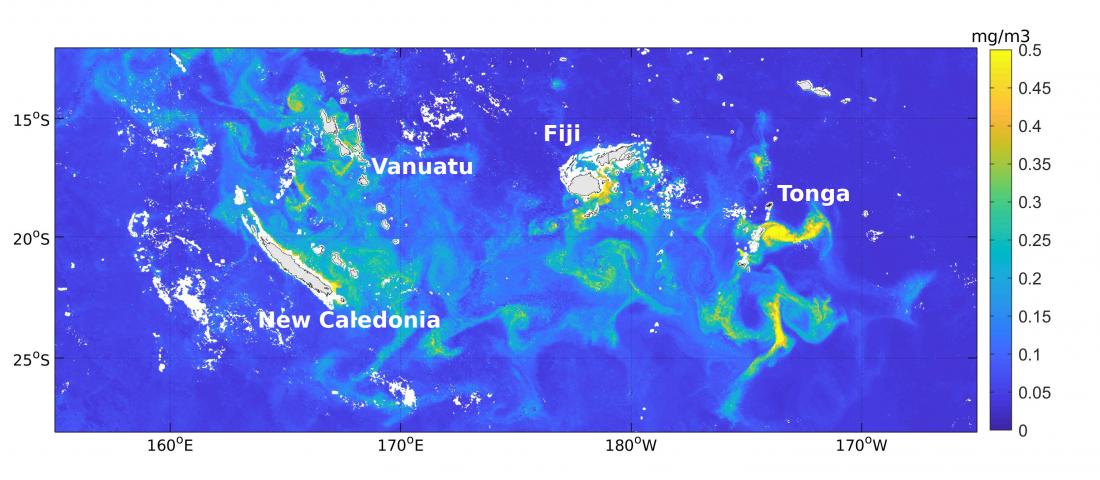SAPPHIRE - the fertilizing effect of islands on plankton
Contacts : Monique Messié, Anne Petrenko
In the relatively poor and nutrient-depleted waters of the tropical Pacific, islands act as nutrient sources fertilizing nearby waters. These nutrients are consumed by microscopic photosynthesizing algae, the phytoplankton. Islands thus sometimes generate very strong phytoplankton enrichments (blooms) visible from space. Phytoplankton being the base of the oceanic food web, islands can thus create "oceanic oases" characterized by strong biological production, rich ecosystems with high biomass from plankton to fish, and higher biodiversity than surrounding waters.
Within the SAPPHIRE project funded by Horizon 2020, we systematically investigated the fertilizing effect of islands for all tropical Pacific islands. We developed an algorithm that automatically detects the island effect area from maps of satellite chlorophyll, a proxy for phytoplankton biomass. We also used data from the OUTPACE oceanographic campaign, that sampled the western tropical south Pacific nearby several islands in 2015.
Our work reveals a strong influence of islands on phytoplankton in the Pacific, with chlorophyll enrichments around 10% and a significant impact on plankton species and biodiversity. On average, areas fertilized by islands represent about 2% of the tropical Pacific. We also identified a new type of island effect, where the phytoplankton enrichment is "delayed" and carried away from islands by oceanic currents, which leads to a bloom without any apparent connection with the islands that triggered it.


